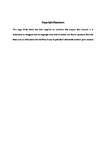The role of Oil in Economic Development -The case of Libya (1970-2010).
| dc.contributor.supervisor | Benhin, James | |
| dc.contributor.author | Elwerfelli, Ali Hassan | |
| dc.contributor.other | Plymouth Business School | en_US |
| dc.date.accessioned | 2016-11-29T11:05:20Z | |
| dc.date.available | 2016-11-29T11:05:20Z | |
| dc.date.issued | 2016 | |
| dc.identifier | 10087787 | en_US |
| dc.identifier.uri | http://hdl.handle.net/10026.1/8044 | |
| dc.description.abstract |
Abstract The objectives of this thesis are to: (1) examine if the resource curse exists in the context of Libya; (2) assess the role of institutions in avoiding or minimising the resource curse, and; (3) evaluate institutional and economic reforms required, and the best options to diversify the economy from oil, hence avoid the resource curse in Libya. To achieve these, three approaches are applied, (i) a three country comparative analysis; (ii) Libya country-level time-series analysis, and; (iii) institutional descriptive analysis. This thesis uses time-series data and annual datasets covering 1970-2010. Johansen’s co-integration is used to establish the long-run equilibrium relationship among the variables in the models. The Johansen co-integration test, based on the Trace and Maximum Eigenvalue statistics, is applied. In the first approach, the three case studies included in the study are Nigeria, Norway and UAE, with outcomes suggesting that Norway managed to avoid the Dutch disease, the UAE show no major signs of the resource curse, Norway and the UAE have largely managed to overcome Dutch disease, while Nigeria suffers a management curse. The first model suggests that Libya may experience a resource curse, but this may not be as a result of an appreciation of the real exchange rate. A 1% increase in the oil price will cause the Libyan exchange rate to increase (depreciate) by 1.41%. The country could potentially suffer from Dutch disease, but no evidence can be brought by the first model alone. In an attempt to reinforce the first analysis, the second model examined the sectoral impacts of the Dutch disease. Three relations are estimated; tradable sectors (manufacturing and agricultural), and non-tradable sectors (construction and services). These were all found to have been affected by oil revenue. This therefore confirms the existence of Dutch disease in Libya. The descriptive statistics analysis is used alongside five governance indicators: political stability, government effectiveness, and regulatory quality, rule of law and control of corruption. It is concluded that the quality of institutions in Libya affects economic growth negatively. The study holds several implications for policy-makers. | en_US |
| dc.language.iso | en | en_US |
| dc.publisher | Plymouth University | en_US |
| dc.subject | Co-integration | en_US |
| dc.subject | Resource curse | |
| dc.subject | Dutch disease | |
| dc.subject | Libya | |
| dc.subject | Real exchange rate | |
| dc.subject | Institutional Quality | |
| dc.subject.classification | PhD | en_US |
| dc.title | The role of Oil in Economic Development -The case of Libya (1970-2010). | en_US |
| dc.type | Thesis | |
| plymouth.version | publishable | en_US |
| dc.identifier.doi | http://dx.doi.org/10.24382/4134 | |
| dc.identifier.doi | http://dx.doi.org/10.24382/4134 | |
| dc.rights.embargoperiod | No embargo | en_US |
| rioxxterms.funder | Not available | en_US |
| rioxxterms.identifier.project | Not available | en_US |
Files in this item
This item appears in the following Collection(s)
-
01 Research Theses Main Collection
Research Theses Main


